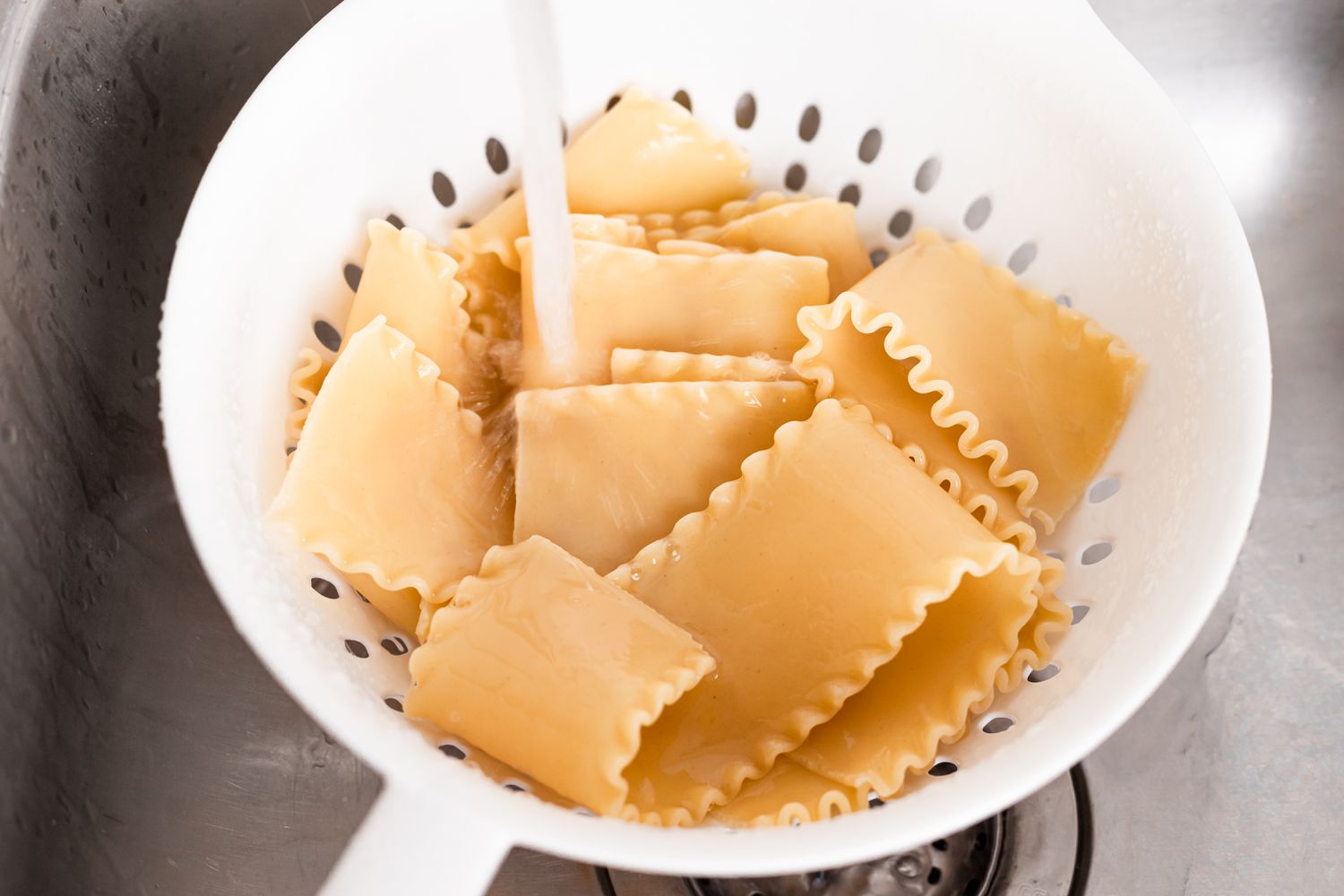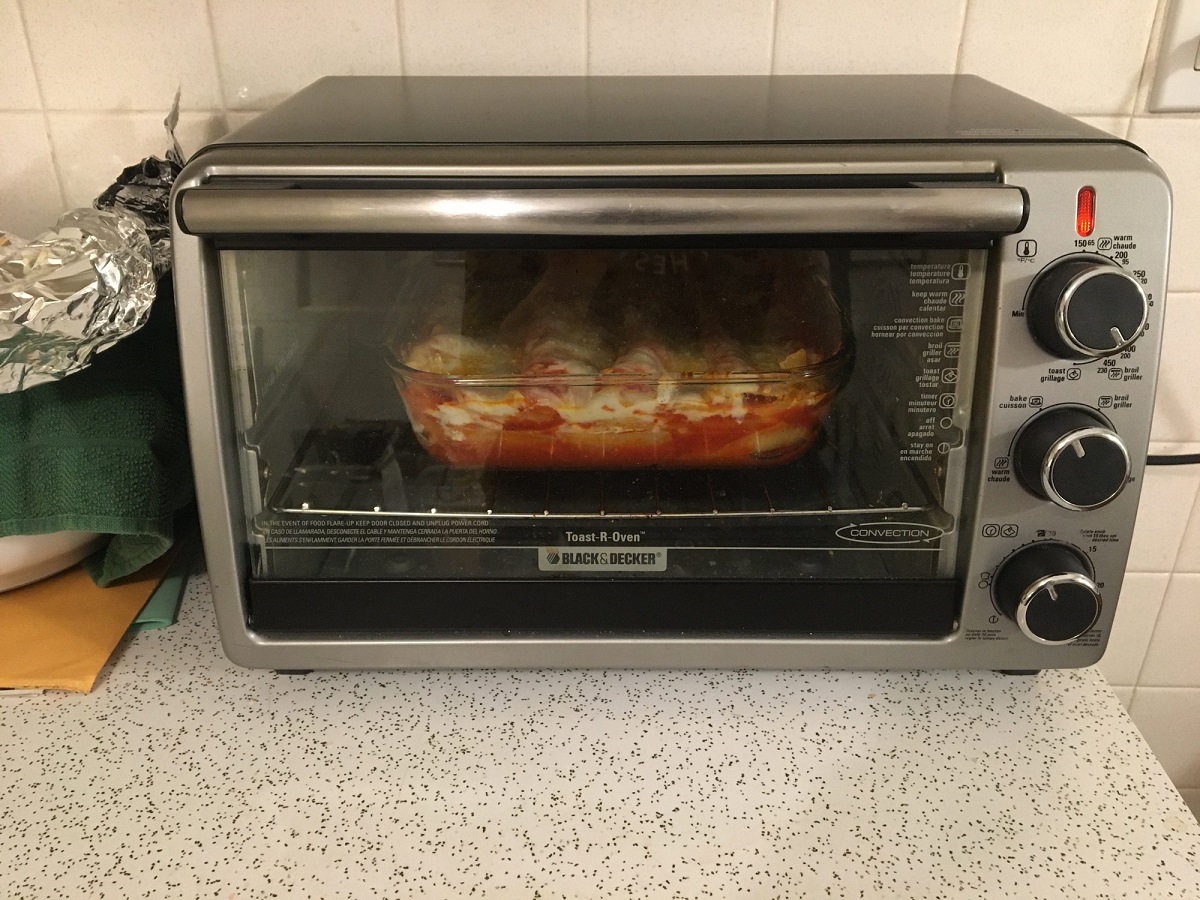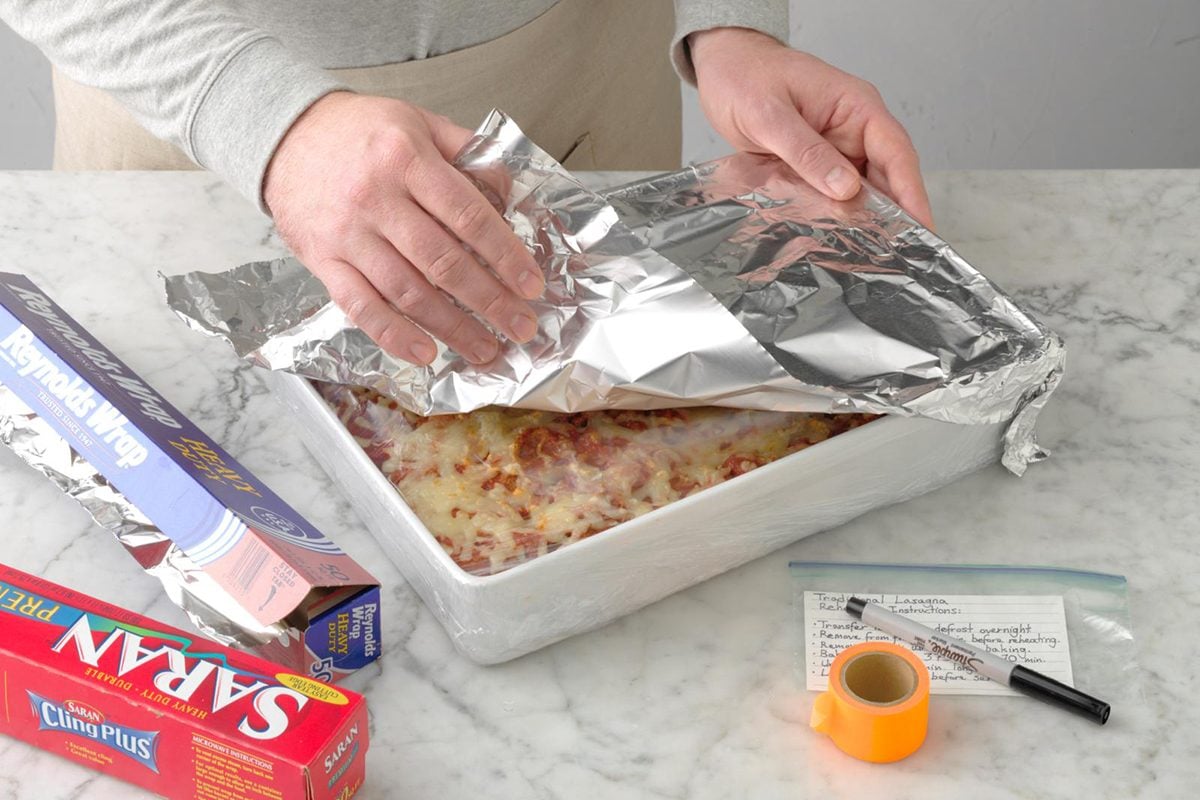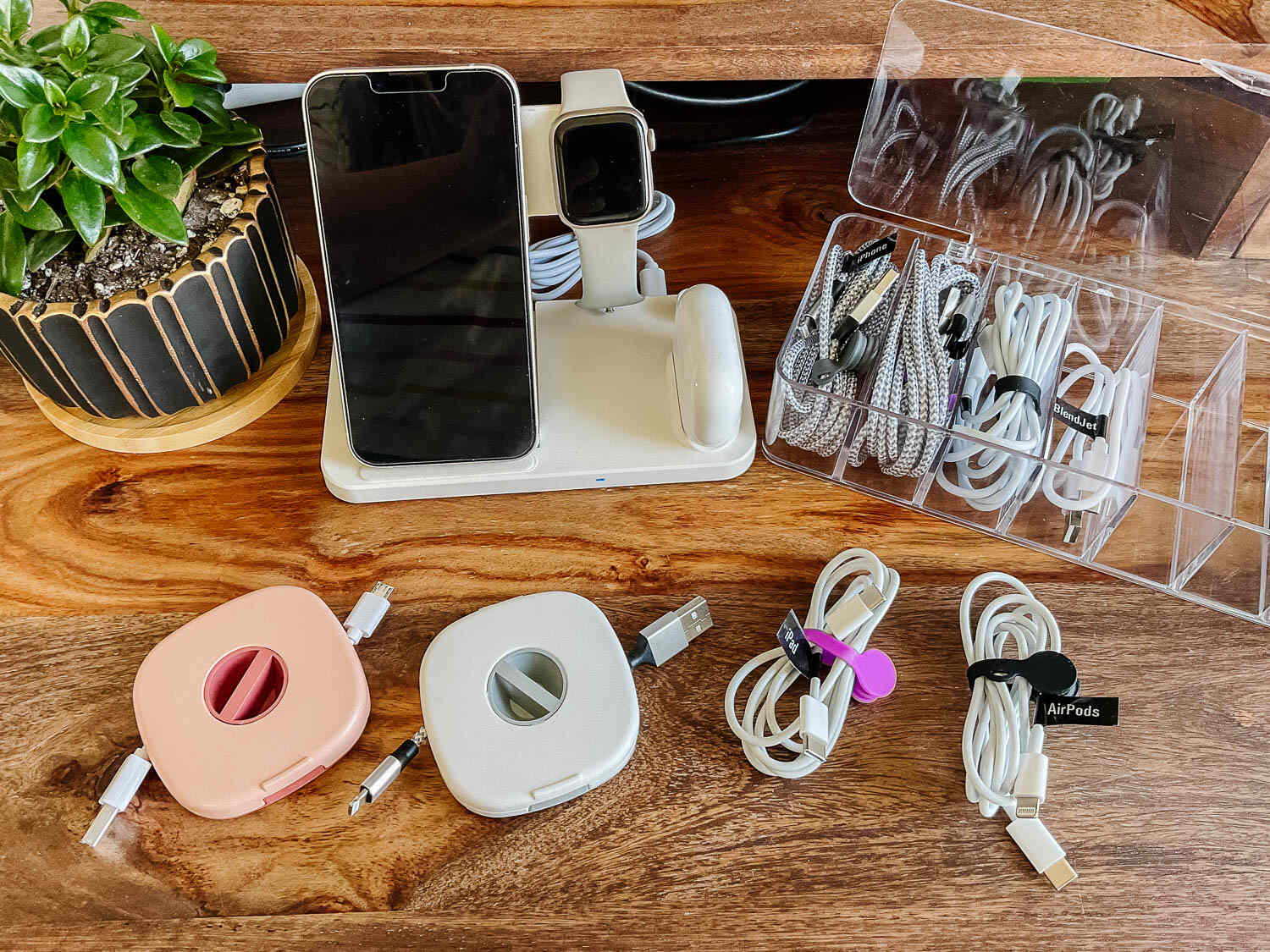

Articles
How To Store Lasagna
Modified: December 7, 2023
Learn the best techniques and tips for storing lasagna in this comprehensive guide. Read more articles on how to properly store and preserve your favorite dishes.
(Many of the links in this article redirect to a specific reviewed product. Your purchase of these products through affiliate links helps to generate commission for Storables.com, at no extra cost. Learn more)
Introduction
Lasagna is a delicious and comforting Italian dish made with layers of pasta, sauce, cheese, and various fillings. Whether you’re making it from scratch or enjoying leftovers, knowing how to properly store lasagna is essential to preserve its taste and texture.
In this article, we will guide you through the process of storing lasagna to keep it fresh and flavorful. From choosing the right container to reheating techniques, we will cover everything you need to know to ensure your lasagna remains delicious even after it has been stored.
So, let’s dive in and discover the best practices for storing lasagna to enjoy it at its best!
Key Takeaways:
- Properly storing lasagna is crucial for preserving its flavor and texture. Choosing the right container, using quality ingredients, and reheating to 165°F ensures delicious, safe-to-eat lasagna every time.
- Whether refrigerating for short-term or freezing for long-term storage, follow proper techniques to maintain lasagna’s integrity. Thaw slowly, label containers, and check for spoilage to enjoy mouthwatering lasagna whenever you desire.
Read more: How To Store Lasagna In The Fridge
Choosing the Right Container
The first step in properly storing lasagna is selecting the right container. It’s important to choose a container that is suitable for both storing and reheating the dish. Here are some factors to consider:
- Size: Opt for a container that is just the right size for your lasagna. If the container is too large, it may allow air to circulate around the lasagna, potentially leading to freezer burn or drying out. On the other hand, if the container is too small, the lasagna may get squished or not fit properly.
- Material: Look for containers that are freezer-safe, oven-safe, and microwavable. Glass or oven-safe ceramic dishes are ideal as they distribute heat evenly and can go from the freezer to the oven without the risk of cracking. Make sure the lid is also freezer-safe and tight-fitting to prevent air exposure.
- Divisible Sections: If you plan on storing individual portions of lasagna, consider using containers with segmented sections. These are convenient when you want to store and reheat a single serving without having to defrost the entire lasagna.
Once you have selected the right container, it’s time to prepare and assemble your lasagna for storage.
Preparing and Assembling Lasagna
Before storing your lasagna, it’s important to properly prepare and assemble it to maintain its flavor and texture. Here are some tips to follow:
- Cook the pasta: Boil the lasagna noodles according to the package instructions until they are al dente. This will prevent them from becoming too soft when reheated.
- Layer the ingredients: Start by spreading a thin layer of sauce on the bottom of the container to prevent the pasta from sticking. Then, layer the cooked noodles, sauce, cheese, and any additional fillings such as meat, vegetables, or herbs. Repeat the layers until you reach the top of the container, ending with a layer of cheese on top.
- Avoid overfilling: Be mindful not to overfill the container, as the lasagna may expand during freezing. Leave some space at the top to allow for expansion without the risk of spilling over.
- Wrap it tightly: If using a disposable aluminum foil container, cover it tightly with multiple layers of foil. If using a reusable container, ensure the lid is tightly secured to prevent air exposure.
Once your lasagna is assembled and properly wrapped, it’s time to store it in the refrigerator or freezer, depending on how soon you plan to consume it.
Storing Lasagna in the Refrigerator
If you plan to enjoy your lasagna within the next few days, storing it in the refrigerator is the best option. Here’s how to do it:
- Cool it down: Allow the lasagna to cool completely at room temperature before transferring it to the refrigerator. This helps prevent condensation from forming, which can lead to sogginess.
- Divide into portions: If you have a large lasagna and anticipate consuming it in smaller portions, consider dividing it into individual servings before refrigerating. This way, you can heat up only what you need, reducing waste.
- Wrap it well: Cover the lasagna tightly with plastic wrap or aluminum foil to prevent it from drying out or absorbing any odors from other foods in the refrigerator.
- Store it properly: Place the wrapped lasagna in the refrigerator, preferably on a flat surface or shelf where it won’t be easily disturbed.
- Keep the temperature consistent: Make sure your refrigerator is set at a temperature of 40°F (4°C) or below to ensure the lasagna stays fresh and safe to eat.
When stored properly in the refrigerator, lasagna can typically last for up to 3-4 days. Remember to reheat it thoroughly before consuming for the best taste and to kill any potential bacteria.
To store lasagna, let it cool completely, then cover with plastic wrap and aluminum foil before placing in the refrigerator. It can be stored for up to 3 days.
Freezing Lasagna
If you have made a large batch of lasagna or want to prepare it in advance for future meals, freezing is a great option. Here’s how to freeze your lasagna:
- Cool it down: Allow the lasagna to cool completely at room temperature before freezing. This helps to retain its texture and prevent ice crystals from forming.
- Portion it out: If you prefer to freeze individual servings, divide the lasagna into single portions. This makes it easier to defrost and reheat only what you need.
- Wrap it tightly: Wrap each portion tightly in plastic wrap or aluminum foil. You can also use freezer-safe plastic bags to prevent freezer burn and maintain freshness.
- Label and date: Don’t forget to label each wrapped portion with the date of freezing. This will help you keep track of how long it has been in the freezer and ensure you consume it within a recommended time frame.
- Store it properly: Place the wrapped lasagna portions in the freezer, making sure they are positioned flat to maximize space and prevent them from getting squished.
- Freeze it within the recommended time: It’s best to freeze lasagna within 2 hours of cooking to minimize the risk of bacteria growth. Additionally, ensure your freezer is set at 0°F (-18°C) or below for optimal storage conditions.
Frozen lasagna can retain its quality for up to 3 months. Beyond that, it may start to lose its taste and texture. When you’re ready to enjoy your frozen lasagna, follow the proper thawing and reheating methods.
Read more: How To Store Leftover Lasagna
Reheating Lasagna
When it comes to reheating lasagna, there are a few methods you can choose from to ensure it’s heated through and remains delicious:
- Oven: Preheat your oven to 350°F (175°C). Remove the lasagna from the refrigerator or freezer and transfer it to an oven-safe dish if needed. Cover the dish with aluminum foil to prevent the top from drying out. Heat for approximately 20-30 minutes, or until the lasagna is heated through and the cheese is melted and bubbly.
- Microwave: If you’re short on time, the microwave can be a quick and convenient option. Place individual portions of lasagna on a microwave-safe plate and cover with a microwave-safe lid or microwave-safe plastic wrap, leaving a small vent for steam to escape. Heat on medium power for 2-3 minutes, checking and stirring the lasagna every minute to ensure even heating. Continue heating until the lasagna is hot in the center.
- Stovetop: For a more controlled and even reheating, you can use a stovetop method. In a large skillet or frying pan, place the lasagna over low heat. Cover with a lid and gently heat, stirring occasionally, until the lasagna is heated through.
Regardless of the reheating method you choose, it’s important to ensure that the lasagna reaches an internal temperature of 165°F (74°C) to ensure it is safely heated and free from any potential harmful bacteria.
Once reheated, let the lasagna cool for a few minutes before serving to avoid any burn injuries. You can garnish it with fresh herbs, grated cheese, or a drizzle of sauce to add a finishing touch.
Now that you know how to properly reheat lasagna, you can enjoy it just as deliciously as when it was freshly made!
Tips and Tricks for Storing Lasagna
Here are some additional tips and tricks to keep in mind when storing lasagna:
- Allow it to cool completely: Always let your lasagna cool completely at room temperature before storing it. This helps prevent condensation and maintain its texture.
- Use quality ingredients: Using high-quality ingredients, such as fresh vegetables, flavorful sauces, and good-quality cheese, can greatly enhance the taste of your stored lasagna.
- Label your containers: If you’ve prepared multiple lasagnas with different fillings or sauces, label your containers to avoid any confusion when it’s time to serve or reheat them.
- Consider portion sizes: If you often find yourself with leftover lasagna, consider making smaller portions in individual containers. This allows for easier storage and reheating of single servings.
- Thaw slowly: If you’ve frozen your lasagna, be sure to thaw it gradually in the refrigerator rather than using methods like defrosting it in the microwave. Slow thawing helps maintain the flavor and texture.
- Add extra sauce: When reheating lasagna, you may find that the sauce has dried out a bit. To combat this, you can add a little extra sauce before reheating to keep it moist and flavorful.
- Use proper storage methods: Always store your lasagna in airtight containers or tightly wrapped in foil or plastic wrap to prevent air exposure and maintain its freshness for a longer period of time.
- Check for signs of spoilage: Before reheating or consuming stored lasagna, always inspect it for any unusual odors, strange colors, or signs of mold. If in doubt, it’s better to err on the side of caution and discard it.
By following these tips and tricks, you can ensure that your stored lasagna remains delicious, safe to eat, and ready to enjoy whenever you’re in the mood for a comforting and satisfying meal.
Conclusion
Properly storing lasagna is key to preserving its flavor, texture, and overall quality. Whether you’re preparing it in advance or dealing with delicious leftovers, following the right storage techniques will ensure that your lasagna remains delicious and safe to consume.
From choosing the right container and preparing the lasagna to storing it in the refrigerator or freezer, each step plays a vital role in maintaining the integrity of the dish. Freezing lasagna allows for long-term storage, while refrigeration is ideal for short-term preservation.
When reheating lasagna, the oven, microwave, or stovetop methods can all be used depending on your preference and available time. Regardless of the method chosen, be sure to heat the lasagna to an internal temperature of 165°F (74°C) to ensure it is thoroughly heated.
By following the tips and tricks provided, such as cooling the lasagna before storing, using quality ingredients, and monitoring for signs of spoilage, you can extend the lifespan and enjoy the mouthwatering taste of your lasagna for longer periods.
So, the next time you make lasagna, remember these guidelines for proper storage and reheating. With these techniques, you can confidently store your lasagna and relish a delicious and satisfying meal whenever you desire.
Frequently Asked Questions about How To Store Lasagna
Was this page helpful?
At Storables.com, we guarantee accurate and reliable information. Our content, validated by Expert Board Contributors, is crafted following stringent Editorial Policies. We're committed to providing you with well-researched, expert-backed insights for all your informational needs.















0 thoughts on “How To Store Lasagna”